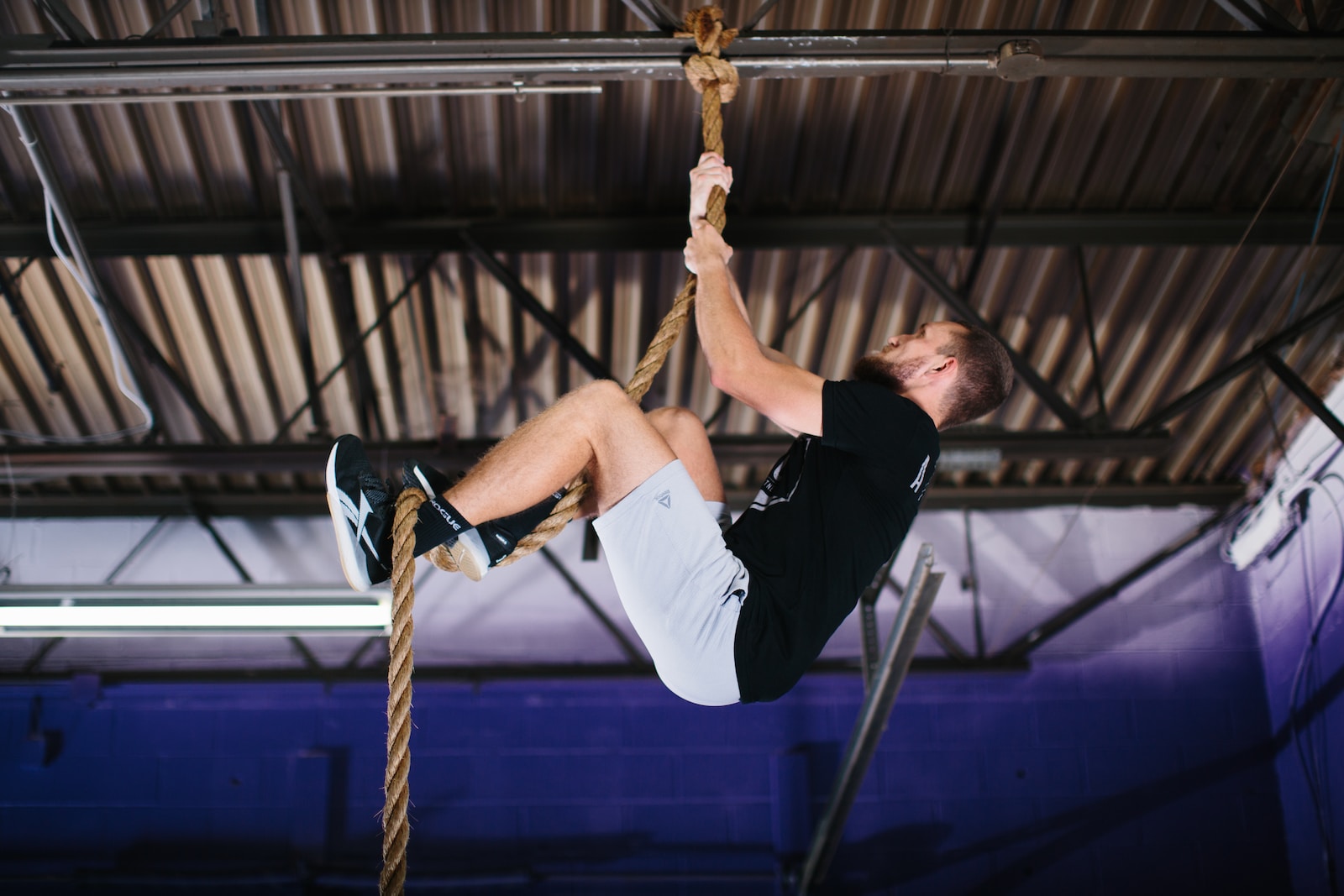In today’s fast-paced and stressful world, finding ways to achieve ultimate wellness and inner peace has become increasingly important. Many individuals are turning to yoga and meditation events as a way to embark on a guided wellness journey towards a healthier and more balanced lifestyle. These events provide a unique opportunity to connect with like-minded individuals, learn from experienced instructors, and deepen one’s practice in a supportive and uplifting environment.
The Power of Yoga & Meditation Events
Yoga and meditation have long been recognized for their countless physical, mental, and emotional benefits. By participating in yoga and meditation events, individuals can amplify the positive effects and take their practice to new heights. Here are some reasons why attending these events can be transformative:
- Expert Guidance: Yoga and meditation events are led by experienced instructors who have dedicated their lives to these practices. Their expertise and knowledge can help individuals refine their techniques, correct any imbalances, and gain a deeper understanding of the philosophies behind these ancient practices.
- Instructors at these events have undergone extensive training and have received certifications in yoga and meditation. They have a deep understanding of the physical postures (asanas), breathing techniques (pranayama), and meditation practices that can greatly enhance one’s well-being.
- Through expert guidance, individuals can learn proper alignment in their yoga poses, which can prevent injuries and maximize the benefits of each posture.
- Instructors can also provide personalized modifications and adjustments to suit individual needs and abilities, ensuring that participants get the most out of their practice.
- Community Support: Attending yoga and meditation events brings individuals together in a community of like-minded individuals. This sense of belonging and support can be incredibly powerful, providing a safe space to share experiences, challenges, and triumphs. Being surrounded by individuals who are on a similar journey can offer encouragement and motivation to stay committed to one’s practice.
- The community aspect of these events fosters a sense of connection and support. Participants can find inspiration and motivation from others who share their passion for yoga and meditation.
- Sharing experiences and challenges with others can create a sense of camaraderie and provide a support system. Participants can learn from each other, exchange tips, and offer guidance on their wellness journey.
- Being part of a community can also help individuals stay accountable to their practice. By attending events regularly, participants can establish a routine and maintain consistency in their yoga and meditation practice.
- Inspiration and Motivation: Yoga and meditation events often feature guest speakers, workshops, and demonstrations that can inspire and motivate participants. These events provide an opportunity to learn from respected experts in the field, discover new practices, and gain fresh perspectives. The energy and enthusiasm generated in these events can ignite a renewed passion for personal growth and self-discovery.
- Guest speakers at these events may include renowned yoga and meditation teachers, wellness experts, and spiritual leaders. Their wisdom and insights can inspire participants to explore new aspects of their practice and expand their knowledge.
- Workshops and demonstrations offer a hands-on learning experience, allowing participants to deepen their understanding of specific techniques or topics. These interactive sessions can provide practical tools and strategies that individuals can incorporate into their daily lives.
- The collective energy and enthusiasm of participants in these events create a supportive and uplifting atmosphere. This positive environment can have a profound impact on one’s motivation to continue their wellness journey and strive for personal growth.
- Deeper Connection: The guided nature of these events allows participants to connect more deeply with their own bodies, minds, and spirits. Through expert guidance and focused attention, individuals can explore their practice on a more profound level, uncovering hidden potential and unlocking inner wisdom. This enhanced connection can lead to a greater sense of self-awareness and self-compassion.
- Yoga and meditation events provide a dedicated time and space for individuals to tune into their bodies and minds. The guided practices help participants cultivate a state of mindfulness, where they can observe their thoughts and emotions without judgment.
- By developing a deeper connection with their bodies, individuals can become more attuned to their physical sensations and needs. This self-awareness can help in making healthier lifestyle choices and promoting overall well-being.
- Through regular practice and self-reflection, individuals can develop a sense of self-compassion and acceptance. They can learn to be kinder to themselves and embrace their strengths and limitations, fostering a positive relationship with their own selves.
What to Expect at Yoga & Meditation Events
Yoga and meditation events come in various forms, catering to different preferences and levels of experience. Here are some common elements you can expect to find at these events:
1. Yoga Asana Classes
Yoga asana classes form the foundation of most yoga events. These classes focus on physical postures and movements that help improve strength, flexibility, and balance. Instructors guide participants through a series of poses, emphasizing proper alignment and breath control. Whether you are a beginner or an advanced practitioner, there are classes available for all levels.
- Yoga asana classes typically start with a warm-up to prepare the body for the physical practice. This may include gentle stretches, joint mobilization exercises, or breathing exercises.
- Instructors guide participants through a sequence of yoga poses, providing verbal cues and demonstrations to ensure proper alignment and technique.
- Participants are encouraged to listen to their bodies and modify poses as needed to suit their individual abilities and limitations.
- Classes often end with a cool-down period, which may include gentle stretches, relaxation poses, and a final relaxation (savasana) to integrate the physical and mental benefits of the practice.
2. Meditation Sessions
Meditation sessions are an integral part of any yoga and meditation event. These sessions allow individuals to quiet the mind, cultivate mindfulness, and cultivate a deeper sense of peace and clarity. Guided meditations led by experienced practitioners can help beginners learn the basics and provide seasoned meditators with new techniques to deepen their practice.
- Meditation sessions may begin with simple breathing exercises or body scan techniques to help participants relax and focus their attention inward.
- Guided meditations often involve visualization, mantra repetition, or mindful awareness of thoughts and sensations.
- Participants are encouraged to sit comfortably or lie down in a relaxed position during meditation sessions. The focus is on cultivating a sense of stillness and presence.
- Meditation sessions may vary in length, ranging from a few minutes to longer periods, depending on the event and the participants’ needs.
3. Workshops and Lectures
Yoga and meditation events often feature workshops and lectures on various topics related to wellness, spirituality, and personal growth. These sessions provide an opportunity to delve deeper into specific areas of interest, learn from experts, and engage in thought-provoking discussions. Workshops may cover topics such as yoga philosophy, Ayurveda, energy healing, chakra balancing, and more.
- Workshops offer a more in-depth exploration of specific subjects, allowing participants to gain a deeper understanding and practical knowledge.
- Expert presenters share their expertise, research, and personal experiences, providing valuable insights and perspectives.
- Workshops may include interactive activities, group discussions, or hands-on experiences to enhance the learning process.
- Participants can ask questions, seek clarification, and engage in meaningful conversations with both the presenters and other attendees.
4. Group Activities and Retreats
Some yoga and meditation events extend beyond a single class or workshop and offer multi-day retreats or group activities. These immersive experiences provide a chance to fully immerse oneself in the practice, often in stunning natural settings. Retreats may include additional activities such as hiking, nature walks, chanting, and communal meals, creating a comprehensive and transformative wellness experience.
- Retreats provide an opportunity to disconnect from the demands of everyday life and create a dedicated space for self-care and personal growth.
- Group activities and retreats often take place in serene and natural environments, such as retreat centers, ashrams, or eco-friendly resorts. These settings offer a peaceful and rejuvenating backdrop for the practice.
- In addition to yoga and meditation sessions, retreats may include outdoor activities like hiking, nature walks, or swimming, allowing participants to connect with nature and enjoy physical movement in a natural setting.
- Communal meals are often provided, offering participants the chance to nourish their bodies with healthy, vegetarian or vegan meals and connect with others in a shared dining experience.
How to Choose the Right Yoga & Meditation Events
With a plethora of yoga and meditation events available, choosing the right one can seem overwhelming. Here are some factors to consider when selecting an event that aligns with your goals and preferences:
- Instructor Credentials: Research the credentials and experience of the instructors leading the event. Look for certifications, training, and years of practice to ensure you will be learning from qualified professionals.
- Check if the instructors have completed reputable yoga teacher training programs or meditation teacher training courses.
- Look for additional certifications or specialized training in specific yoga styles, meditation techniques, or therapeutic approaches.
- Consider the instructors’ years of experience in teaching and practicing yoga and meditation, as well as their reputation within the wellness community.
- Event Format: Determine the format of the event and decide what suits your preferences. Are you looking for a single workshop, a weekend retreat, or a longer-term program? Consider the duration, location, and schedule to ensure it aligns with your availability.
- Workshops and single-day events are ideal for those who have limited time or want to explore a specific aspect of yoga or meditation.
- Weekend retreats offer a more immersive experience, allowing participants to disconnect from their daily routines and dive deeper into their practice.
- Longer-term programs, such as teacher training courses or extended retreats, provide a comprehensive and transformative experience for those seeking a more in-depth exploration of yoga and meditation.
- Focus and Theme: Different events may have specific focuses or themes, such as mindfulness, stress reduction, or spiritual growth. Assess your own goals and choose an event that resonates with your intentions.
- If you are looking to reduce stress and cultivate mindfulness, consider events that emphasize relaxation techniques, breathwork, and meditation practices.
- For those interested in spiritual growth and self-discovery, events that incorporate yoga philosophy, chanting, or energy healing modalities may be more suitable.
- Some events may cater to specific populations, such as prenatal yoga events, yoga for seniors, or yoga for athletes. Choose an event that aligns with your specific needs and interests.
- Reviews and Recommendations: Seek out reviews and recommendations from others who have attended similar events. Their experiences can offer valuable insights and help you make an informed decision.
- Read online reviews, testimonials, and feedback from previous participants to get a sense of the event’s quality, organization, and overall experience.
- Reach out to friends, colleagues, or yoga and meditation communities for personal recommendations and insights.
- Consider joining online forums or social media groups related to yoga and meditation to connect with like-minded individuals and gather recommendations.
Conclusion
Embarking on a guided wellness journey through yoga and meditation events can be a transformative experience. These events provide expert guidance, community support, and inspiration to help individuals deepen their practice and achieve higher levels of well-being. By immersing oneself in these events, individuals can cultivate a deeper connection with their bodies, minds, and spirits while gaining valuable tools to navigate life’s challenges. Choose the right events that resonate with your goals and embark on a path to enhanced wellness and inner peace.
Note: This article is written in markdown format.
FAQ
1. Why should I attend yoga and meditation events?
Attending yoga and meditation events provides expert guidance from experienced instructors, community support, inspiration and motivation, and a deeper connection with oneself.
2. What can I expect at yoga and meditation events?
At yoga and meditation events, you can expect yoga asana classes, meditation sessions, workshops and lectures, and group activities and retreats.
3. How do I choose the right yoga and meditation event?
When choosing a yoga and meditation event, consider the instructor credentials, event format, focus and theme, and reviews and recommendations from others.
4. How can yoga and meditation events benefit me?
Yoga and meditation events can benefit you by refining your techniques, deepening your practice, providing a supportive community, offering inspiration and motivation, and helping you develop a deeper connection with yourself.









